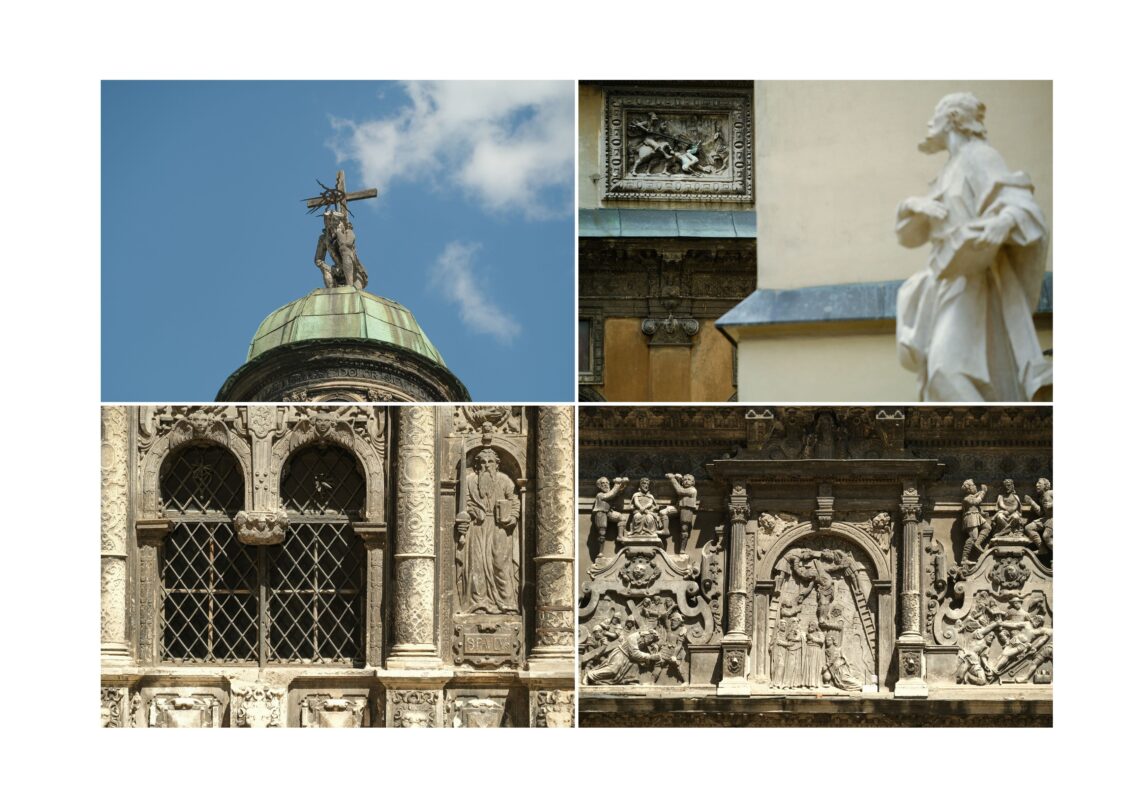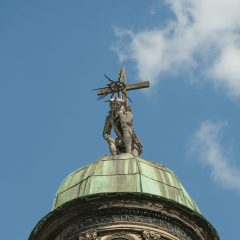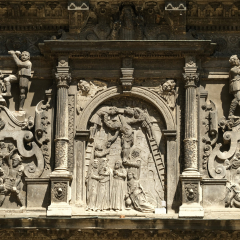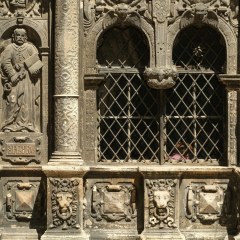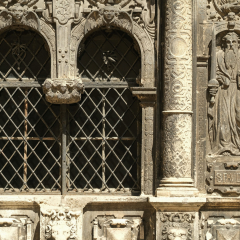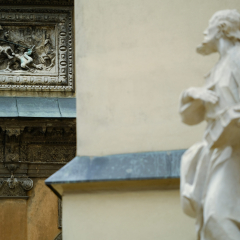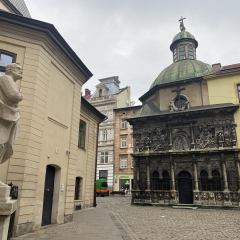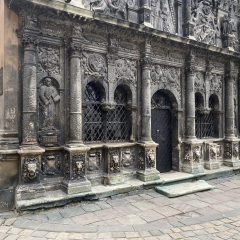When I travelled to Lviv first time in 1998, one of the first architectural pearls I recognised in the city centre, was the Chapel of Boim Family, neighbouring the Latin Cathedral. It is one of the most impressive buildings in the historical city centre. During the lockdown in 2020 I got the opportunity to take some photographs inside this fascinating building in the heart of Lviv, which usually is closed for visitors. Since 1967 the Boim Chapel is a branch of the Lviv Art Gallery.
The chapel was raised in the early 17th century and served as a burying vault for the rich and powerful Boim family, whose members did a lot for Lviv. The construction was initiated by the wealthy merchant and usurer of Hungarian origin Georgy Boim, who is said to have lent money to the king.
The family vault, in which 14 members of the Boim family were buried, was situated on the church cemetery. In the late 18th century, Austrian authorities, who were concerned with environmental conditions and Lviv residents’ health, ordered to move the burial place to new graveyards, built in the city outskirts. Only three chapels, including the Chapel of Boim Family, escaped demolition by a miracle.
The Chapel’s square building in the late Renaissance style is crowned with a heavy dome, topped by an untypical sculpture of the sitting sad Christ. The eastern facade is adorned with fresco portraits of Georgy Boim and his wife Jadwiga, and the northern one is adorned with a bas-relief image of the Virgin Mary and Christ. Underneath you will see a sculptural relief of the divine protector of the Boim Family, St. George.
However, the Chapel’s main (western) facade has the greatest value: it is fully covered with carved stone décor. Its bas-reliefs, depicting scenes from the Old and New Testaments, gave the Chapel of Boim Family its nickname “Bible for the poor,” meaning that even someone who has never read the Holy Scripture can understand these ‘rock stories’.
The Chapel’s interior is also rich with decorative elements. All walls are covered with sculptural images and stucco work. The decoration of the inside area of the dome creates an illusion of added depth and space, visually increasing the size of the small vault.
Interior’s peculiar detail is the image of the Last Supper, situated in altar area. A new element was added to the classical plot: the grinning devil was put behind the chair of Judas, who has already received 30 pieces of silver for betraying Jesus Christ. It is due to this element that the Chapel of Boim Family has long remained not sanctified. According to another version, the Archbishop of Lviv refused to sanctify the chapel for three years because of its alleged excessive pomp. At the same time, he was building his own chapel nearby, which looked very modest against the background of Boim family’s luxurious vault.
Andrzej Bemer is known as the architect of this late Renaissance building. Johann Scholz and Johann Pfister are told to be the sculptors of this fascinating building in Lviv.

